Gotta go fast.
Peloton Tread long-term review: A game console for your feet
I've been living with the Peloton Tread for just over three months now, and I've come away with a singular conclusion - it's a video game console for your feet.
Gamification in fitness is nothing new, but the Peloton Tread weaves it in through the entire experience to the point it can feel like you're playing a level in a video game rather than exercising - sometimes very literally.
If you, like me, have the type of brain that gets a big dopamine fix from seeing "the big number go up", the Tread can be downright addictive. That's a weird thing to say about a treadmill.
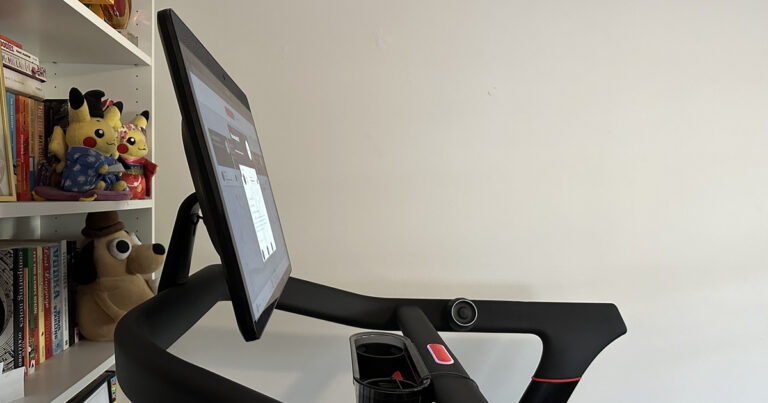
How much does the Peloton Tread cost in Australia?
The Peloton Tread will start at $4,445. On top of that, you'll need to take up a Peloton All-Access Membership for $59 per month. While you can still use the Tread without the subscription, you won't be able to access any Peloton content such as classes without it.
Peloton also had Tread bundles that includes weights and a gym mat. These start at $4,630.
If you don't want to pay for your Tread in one lump sump, Peloton will sell you one on a 43-month interest-free repayment. These start at $103 per month. Note that this fee doesn't include your Peloton All-Access subscription.
Need for speed
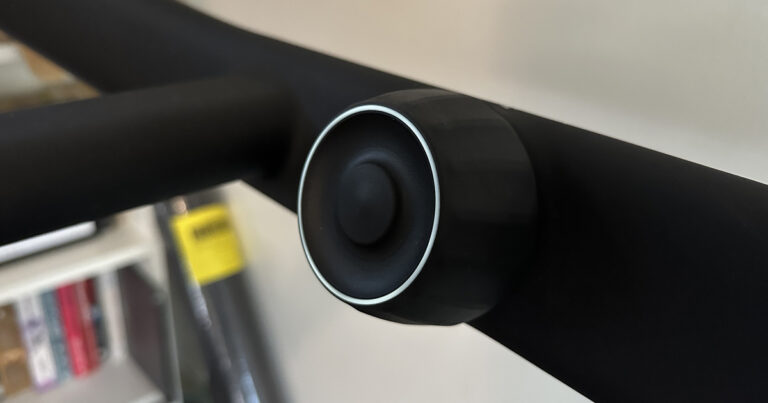
Let's start with the Tread itself - your controller. The hardware is pretty damn swanky for a treadmill.
To an extent, a treadmill is a treadmill, but the Peloton's secret is dials (pictured above) for adjusting speed and incline. Instead of fighting with a screen or mashing buttons, you spin the dials. It's not always perfectly precise, but much better than the alternative - especially when you're running.
The other key element is the 23.8-inch 1080p touchscreen. It's certainly one of the bigger screens I've seen on a treadmill, and it's pretty nice for the most part.
The screen is paired with decent speakers. They're not amazing, but they're good enough. They go loud enough that you can still comfortably hear your instructor and music over yourself running. You've also got the option of using Bluetooth earbuds, but given the option, not wearing headphones when running is nicer due to sweat reasons.
I've experienced a tiny bit of jumpiness with the Tread belt, but this hasn't been a consistent issue. There was a small amount when first setting it up, and when I did my first run after being away for a week. In both cases, it went away quickly, and hasn't been a consistent issue.
One omission worth noting is a lack of GymKit support, so you can't pair your Apple Watch for easier metric logging. Peloton has supported GymKit on some of its exercise bikes, so the lack of it here is a bit weird. You can however install the Peloton app to share the heart rate from your Apple Watch with the treadmill.
Lastly, the Tread isn't a small unit. Peloton recommends you have 60cm of clearance to the left, right, and front, as well as 2m behind. If you're living inner city, that kind of real estate is going to be challenging for many - especially given the Tread's footprint is 1.7m x 0.8m. Based on these guidelines, the space I've been testing the Tread in is far too small, but I haven't had any issues. And if you look at photos on the Peloton website, they flaunt these requirements too.
Ahead of the class
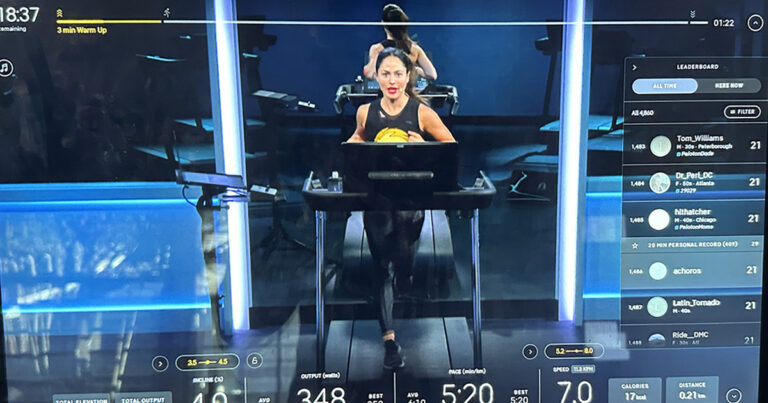
The treadmill itself is only half of the experience. Possibly less. What makes the Tread special is the wealth of workout classes you get access to through your subscription.
The classes themselves aren't untypical for the genre. You've got a charismatic trainer leading the workout, espousing big ideas about the strength of the Peloton community and the various personal challenges they've overcome. It's a little culty, but not too culty.
What's unique is how they're gamified. You've got a persistent scoreboard that compares your output (a score built from speed and incline) to everyone who’s ever done the class. This alone brings out my competitive nature, and when you combine this with achievements, streaks, and challenges, it gets engrossing.
The hardware-software integration is also a boon. Instructors give out speed and incline suggestions, which are clearly noted in the Tread interface. You can see if you're meeting them, and you can even have the Tread automatically adjust the incline.
The combination of all this has had me regularly running for over an hour straight - a feat I would not normally accomplish of my own volition. Prior to the Peloton, I found myself getting bored on a treadmill within 20 minutes - I very much need to trick myself into running.
More impressively, my cardio-hating partner has also been tricked by the Tread. Partly because of convenience ("it's right there"), and partly because the classes have taught her proper running technique.
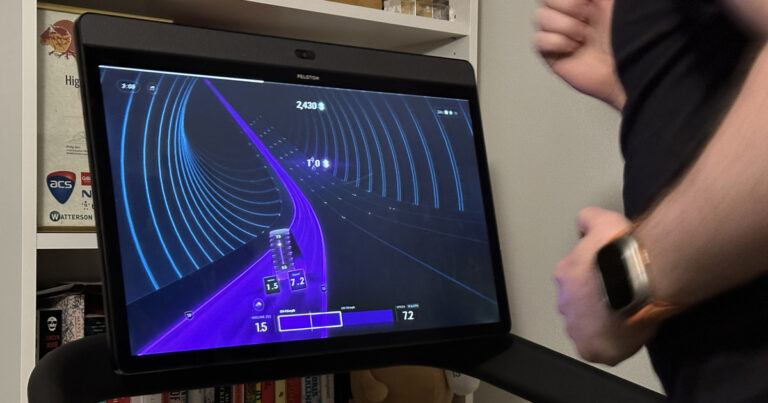
The Tread's gamification is quite literal sometimes. One of my favourite inclusions is Lanebreak, a workout type that's effectively a rhythm running game. Each level Is set in a Tron-like environment, and instead of getting cues from an instructor, you have to match your speed and incline to make your score go up. You even get a star rating at the end of each level, a la Guitar Hero.
While the Tread has plenty of ways to keep you hooked, it manages to avoid some of the issues we see with other fitness tech. Instead of focusing on a daily exercise streak, the Tread is more invested in having you maintain a weekly streak. If you're doing one of the training programs, many have rest days built in. It's a bit more holistic than the "exercise every day" mantra we see a lot of wearables push.
Lastly, no matter what kind of class you're doing, it's set to music. For me to get really invested in a workout, I need to like the music, but when your taste is as troubled as mine, that can be tricky. Fortunately, Peloton has a surprising amount of classes set to metal. It unsurprisingly skews mainstream, featuring bands like Metallica, Slipknot, Pantera, and Mastodon, but I appreciate it nonetheless.
A massive Android tablet
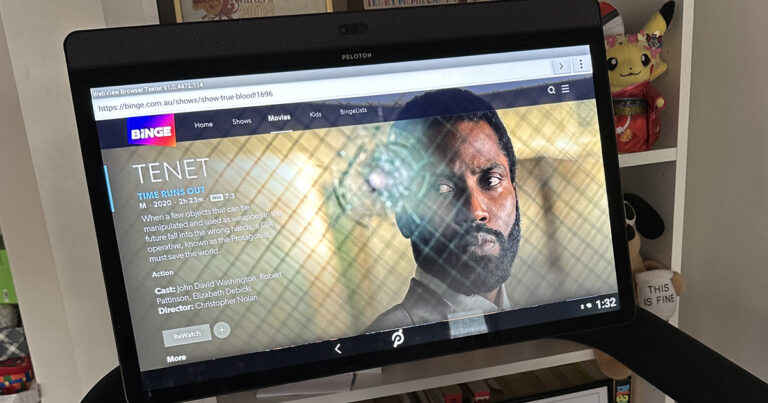
The Tread uses an Android base for its software experience, but the ecosystem is entirely Peloton. While many treadmills now ship with the likes of Netflix and YouTube, the Tread eschews these entirely. If you're using the Tread, Peloton clearly wants you to be engaging with one of its workouts.
That makes sense from a business perspective. Perhaps Peloton would sell fewer All-Access subscriptions if owners could just rewatch BoJack Horseman instead of doing a trainer-led class. The emotional pain masks the physical quite well, after all.
It's a shame that Peloton doesn't allow third-party apps out of the box, but there are some options. Since the Tread runs Android, there's a hidden web browser you can find. (You need to open the About menu and tap the lower right corner seven times.) Netflix and Disney Plus straight-up won't work on the Peloton browser, but I had success with Binge and YouTube.
Since this isn't officially supported functionality, there's no guarantee as to whether it will work in perpetuity. You shouldn't base your purchase decision on this. But for the time being, you can use the Tread to watch Tenet as Christopher Nolan intended.
If you want to get into the weeds, it is possible to sideload Android apps onto your Peloton. The process is as far from user-friendly as it gets, however, but it's an option if you really want to give it a shot.
A treadmill? In my home?
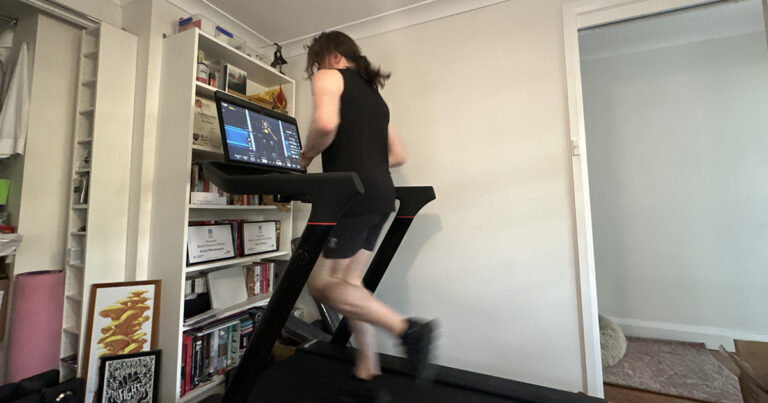
The experience of actually having a Peloton at home is kinda similar to when I got my Nintendo 64, after only playing video games at friends' houses - you can do this at any time?
The Tread is the first exercise equipment I've had at home other than weights and resistance bands. And Dance Dance Revolution and Ring Fit, I guess.
If you've already got an exercise bike or treadmill or whatever at home, none of the below will be revelatory to you. But as someone whose closest gym is a 15-minute walk, the experience of being able to just wake up and jump on the treadmill and save half an hour is a luxury.
I predominantly work from home, so I've been able to squeeze in workouts during my lunch break, which simply wouldn't be possible if I had to go to the gym. The Tread has also been great for doing an extra jog after work if I'm feeling restless, without the sunk cost of the travel time. If I'm going to the gym, I typically spend an hour there to justify the amount of time it takes me to get there.
The ease of which I can just do a workout has been a boon for how much I've been exercising. Even with a week away from home, June was my most active month ever according to my Apple Watch's move ring. Every other month I've had the Tread has been a marked improvement over the rest of this year.
The gym vs. Peloton Tread
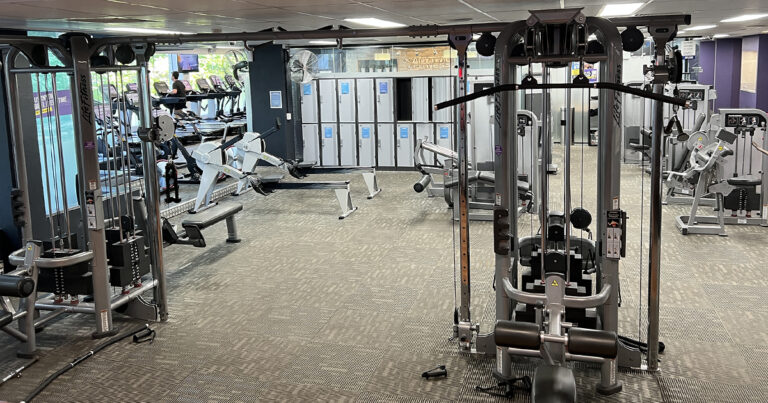
Maybe my metaphor earlier was wrong; perhaps the Tread is more like getting a console after playing games at the arcade. You've got the console, but now you're a little bit more limited in what you can play. In the case of the Tread, you've got to really be into running.
You've got access to bootcamps, strength workouts, yoga, and more as part of the Peloton All-Access app, but obviously, it's still a treadmill. On days when I don't feel like running at the gym, I tend to use a stairmaster or elliptical for lower-intensity cardio. Sure, you can do a high-incline walk on the Tread, but it doesn't quite hit the same.
You lose a bit of flexibility if you want to go all-in on Peloton.
This could be especially important if you travel regularly. My parents live out of town, and being able to visit Anytime Fitness gyms interstate when visiting them is always a useful perk. The Peloton app has guided workouts you can do while away from your treadmill, but there is no way I am working out outside in the Brisbane summer. That's a recipe for death.
Of course, I'm a bit of a sicko in this regard. I'm the kind of person who still insists on closing my Apple Watch rings while on holiday, so I'm not going to skip a day of working out.
The other disadvantage the Peloton has when pitted against the gym, is well, it's just one device. My partner and I tend to work out on the same kind of schedule, so it's taken some advance planning if we both want to get exercise in before work, for example. This is especially important, because the math on a Tread starts to make a lot more sense if at least two people are using it.
One other factor worth considering is ventilation. I don't have aircon in the room I've kept the Tread, and I've managed to steam it up with longer workouts - in winter. If I had to hazard a guess, running in the same space in summer will be rough.
Apple Fitness Plus vs. Peloton Tread
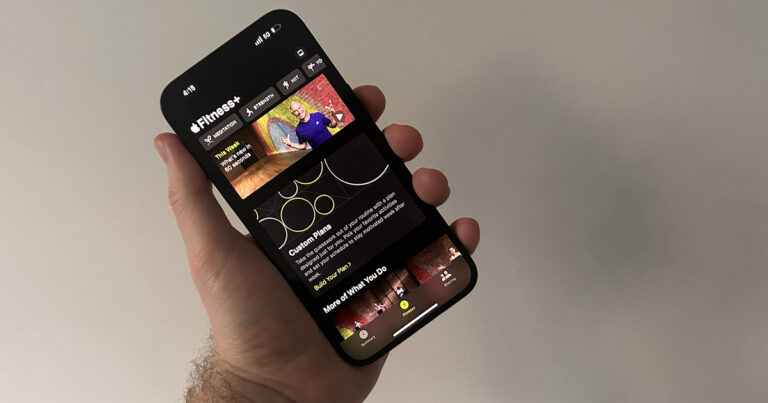
While Peloton was a pioneer in the space, it isn't the only class-based gamified fitness experience in town. Apple doesn't make its own exercise equipment, but has Fitness Plus to tie into the Apple Watch.
Fitness Plus is basically just a selection of exercise classes you can stream. They can pull your metrics from your Apple Watch, but the service no longer requires an Apple Watch.
I found using Fitness Plus at the gym got me partway there when compared to the Peloton Tread, but the experience isn't as holistic.
You miss out on the hardware experience, which hurts. Especially if the treadmill you're using is on the older side. The ease at which you can increase and decrease speed and incline on the Tread removes the frustration from fumbling with a touchscreen or mashing buttons as quickly as you can.
The guidance given also tends to be a lot broader. Apple's Fitness Plus trainers talk about running intensities like moderate, hard, and all-out, rather than giving specific speed ranges to run at. There's a burn bar for comparing your progress to the rest of the class, but it's nowhere near as detailed as Peloton's scoreboard.
Apple Fitness Plus is however a lot more affordable. $14.99 per month, and doesn't require a hardware commitment. Well, other than an iPhone. And you'll still ideally want a treadmill to workout on, but a gym membership can cover that.
By and large, Fitness Plus feels like a more basic experience. The classes are great, and will be more than enough for some people who just want someone to coach them through what would otherwise be a boring treadmill run. But the simpler approach to metrics means they're not quite as hooky as Peloton's.
Is the Peloton Tread worth it?
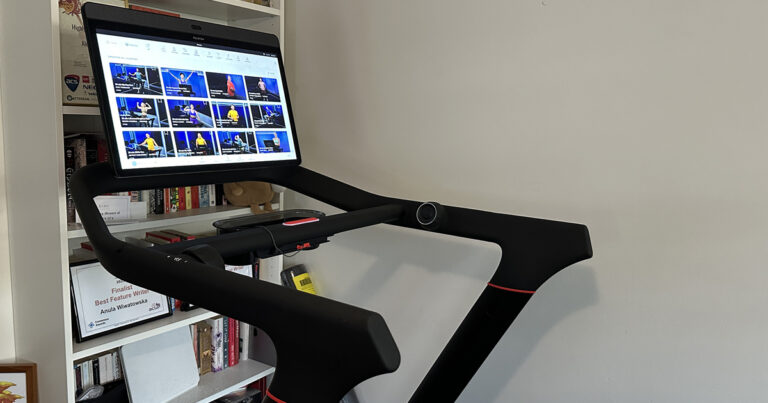
The Peloton Tread is a well-thought-out experience that has made me enjoy running more and made me better at it. Having a treadmill at home is a nice luxury, Peloton's clever gamification makes working out pretty addictive.
It's just a shame that the Tread has a price tag that many will find prohibitive - especially given the All-Access subscription fee on top of the hardware cost. $4,445 is a lot of money to drop on workout equipment.
The math starts making more sense if multiple people in your household are using the Tread, and you're replacing a gym membership, but as aforementioned, that can have its own challenges.
Even if you're in the financial position where you can afford a Peloton Tread, it begs the question of how much you love running. That's kind of obvious, given it's a treadmill, but it's the kind of purchase you have to be all in on.
Sure, there are also walking classes and strength-based bootcamps, but it's a treadmill.
That being said, the Tread is easy to love. If you're on the fence, Peloton does offer a 30-day refund window. If you're not happy, you can get a refund in your first 30 days. You can also download the Peloton app and try some of the classes at a gym. It's not quite the full experience, but it will give you a taste.
There's an inherent paradox in the Peloton Tread proposition - it's a great way to learn to like running, but at the same time, you really want to like running to justify the spend. But if you can justify the spend - and if your brain responds to leader boards, achievements, and streaks - I can all but guarantee you'll find yourself hooked and doing just "one more run".
Related Articles





